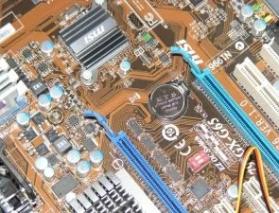
I have been journaling on and off for over thirty years. There are times when I’m in the habit of not only journaling daily but writing multiple pages at a time. There are also months that I go without writing anything, when its hard to write even a paragraph during the day. Much of my journaling has been a record of events that happened. Occasionally I will throw in some feelings and emotions.
Sometimes when I write multiple pages in my journal, I get some creative insight. Such insights are described in the book, The Artist’s Way by Julia Cameron. But this doesn’t happen every day or even every week. Following Cameron’s book, I would try to write out three pages at a sitting. This might take me 45 minutes. With a family, full-time job, and college courses, I often didn’t have the luxury of that much time. I needed to find a more effective way to get to the insights that make my journaling more than just a record of events.
Recently, I was given a copy of Journaling for Dummies by Amber Lea Starfire, MFA. The back cover states that the book helps you “choose a journaling style that fits with your goals.” I had hopes that this book might help guide me in the direction of more creativity. I was surprised to find that the book was so much more. There are chapters on different kinds of journaling to meet your goals and the first one that caught my attention was a chapter on mindful journaling.
What is Mindful Journaling?
By definition mindful journaling is the practice of bringing one’s full attention and awareness to the present moment through writing and reflection. It involves paying attention to thoughts, feelings, and sensations in a non-judgmental way and using the journal as a tool for self-exploration and self-discovery. The benefits of journaling have been proven to enhance your emotional well-being, as has meditation. Mindful journaling can help improve mental clarity, increase self-awareness and self-compassion, reduce stress and anxiety, and enhance emotional well-being.
The purpose of mindful journaling is to center yourself in the present moment in a non-judgmental way. You don’t use mindful journaling to process past events or future plans. Through mindful journaling, individuals can gain a deeper understanding of their thoughts, feelings, and behaviors, as well as develop greater self-awareness and self-acceptance.
How do you Journal Mindfully?
Regular journaling, as I was doing, is a more open-ended form of writing, in which individuals can write about whatever they choose. In contrast, mindful journaling involves a specific focus on mindfulness and the present moment. It may involve prompts or exercises designed to help individuals tune into their present experience and reflect on their thoughts and feelings more mindfully. Some prompts are found in the book, but I found a more extensive list online at Mindful Journaling: 50 Unique Topics And Writing Tips For Beginners. There are also good tips on setting yourself up and starting your journaling session.
Establishing a regular time for mindful journaling can help you make it a habit and ensure that you have the time and space to fully engage in the practice. If you already have a meditation practice you may want to extend that practice to include journaling. One of the key elements of mindful journaling is to bring one’s attention to the present moment. This involves setting aside any distractions and focusing on the task at hand. Journaling after meditation can help to ensure that you are in the right frame of mind.
What are the benefits of Mindful Journaling?
Mindful journaling is not about producing perfect prose or having all the answers. Instead, it’s about being present with whatever arises and letting go of judgment and self-criticism. It’s important to remember that the purpose of mindful journaling is self-exploration and self-discovery, not perfection. This could involve exploring difficult or uncomfortable thoughts and feelings, as well as discovering new insights and perspectives. This is what I am hoping for.
Beginning My Mindfulness Journey
My first attempt at mindful journaling was initiated after a 20-minute guided meditation session. I went outside because I seem to be able to concentrate better there. I sat down and recorded the following:
When I sit outside and watch the sky and the trees, I suppose I am in a mindful moment. It is easy to be mindful here and yet so hard to do it elsewhere. My eyes are open. The trees are talking. They are telling me that things are changing, and I need to take note of that. The environment that was still when I came outside 30 minutes ago is now alive with action. The trees are moving. The birds are talking. The wind is shifting. Do I need to be moving also? Do I need to prepare? Even the sky dancers, the vultures, appear to be flying with a purpose. An eagle soars off to the northeast and I decide to check the weather. It’s sunny and clear now, absolutely beautiful. But rain is expected tomorrow at this time as well as colder weather. Are the elements telling me about things to come, or are they just enjoying the moment as I should be? The crows are making a ruckus as usual. Because they are so intent on alarming each other of my presence, they completely miss the red-tailed hawk that flew behind them, and then on to the northeast. They seem to be focusing on one thing (me), and completely missing something else in their environment (the hawk). I sometimes worry that by trying to be present in the moment I may be missing things around me, also. Then everything quietens back down again. In the distance I hear the hawk call. It made its escape unnoticed by the crows. In the silence of the moment, I now notice that the air is a little cooler. The evening is coming and I smell the fruity drink sitting by my side that also drew a bee to it. I see the vultures silently taking note of the changes in the sky. I’m checking my senses at this exact moment. I am mindful of my external environment at the moment. Now I can begin working on my internal environment.
Rather than my usual method of recording only what is going on I notice already that I am asking questions and pondering answers. I have high hopes for reaching more of my personal insights through journaling this way.
I didn’t include a discussion on the types of notebooks for journaling or whether analog or digital journaling is better because I believe that anything that works for you is better than something you aren’t using. There are many more journaling methods in this book and in my next article on SNS, I will review the chapter on “Improving Life with Gratitude Journaling.”
















